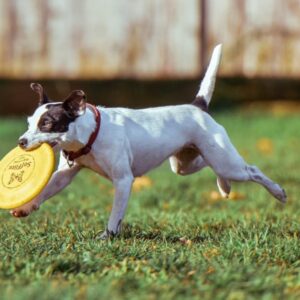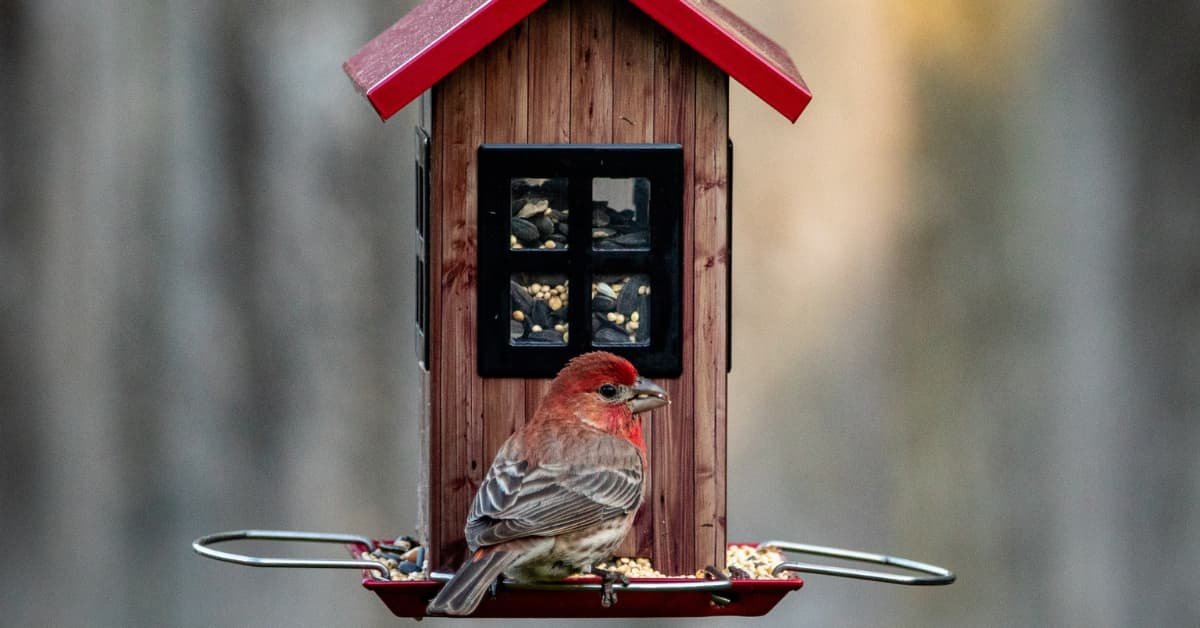
Creating a bird-friendly environment in your backyard is a rewarding and fulfilling experience for nature enthusiasts.
Attracting birds to your yard requires more than setting up a bird feeder. To create a habitat that is conducive to the needs of different bird species, there are various steps that you need to take.
One of the essential aspects of attracting birds is providing food. Different bird species have unique dietary needs, and it is a must to offer a variety of foods.
In this article, we will explore some tips and tricks on how to attract new birds to your backyard.
Short Summary
- Offer food, water, shelter, and nesting sites to attract birds to your backyard
- Different types of bird feeders, water features, and landscaping can attract a variety of bird species
- Adding natural food sources like seed-bearing flowers and berry bushes can also help attract birds
- Be patient and observant, and discourage unwanted bird species like starlings.
Feeding Birds: Types of Food
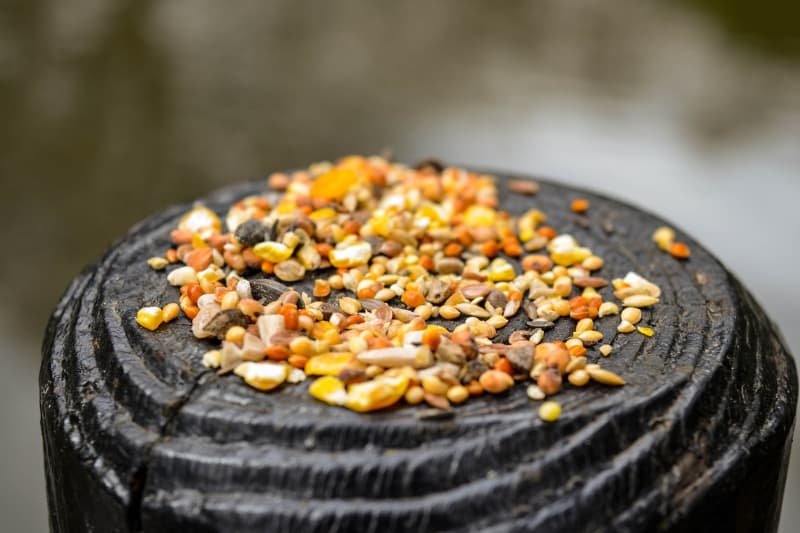
Offer various types of food to attract different bird species to your backyard.
Songbirds, for example, prefer black oil sunflower seeds. Woodpeckers and other fat-loving birds prefer suet.
Hummingbirds, meanwhile, are attracted to nectar feeders filled with a mixture of sugar and water.
Other bird species are attracted to different types of food, such as safflower, millet, and nyjer.
Nuts and fruit chunks are also popular among various bird species, while kitchen scraps can attract a wide range of birds.
To attract specific bird species, it is important to offer their favorite bird feed.
Blue jays and cardinals prefer sunflower seeds, while finches and sparrows prefer nyjer.
Orioles like fruit, while nuthatches prefer suet.
By offering a variety of bird feeders and food types, you can attract a diverse range of bird species to your backyard.
Water Sources: Types and Uses
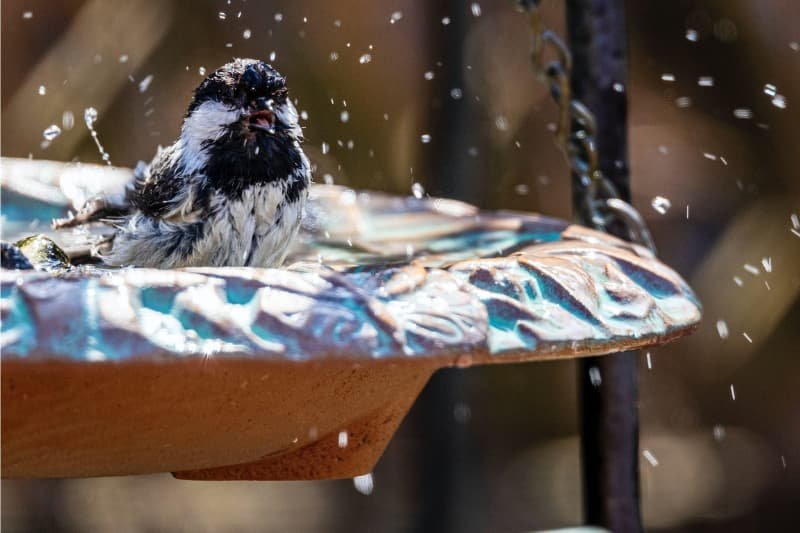
Water is a vital element in creating a welcoming environment for birds. Incorporating different types of water sources such as fountains, waterfalls, and ponds can attract a diverse range of bird species.
Moving water features like fountains and waterfalls are particularly appealing to birds as the sound of running water is a natural signal for them to come and drink.
Ponds provide an excellent place for birds to bathe and swim. For those with limited space, there are several water features that can be installed to attract birds.
DIY bird baths can be made from a variety of materials such as terracotta pots, repurposed dishes, or even large stones. Simply fill the bowl with water and place it in an area with plenty of bird traffic.
Misters and ground bubblers are also great options for attracting birds. They create a gentle spray of water that birds can drink and bathe in.
Creating Bird-Friendly Shelter
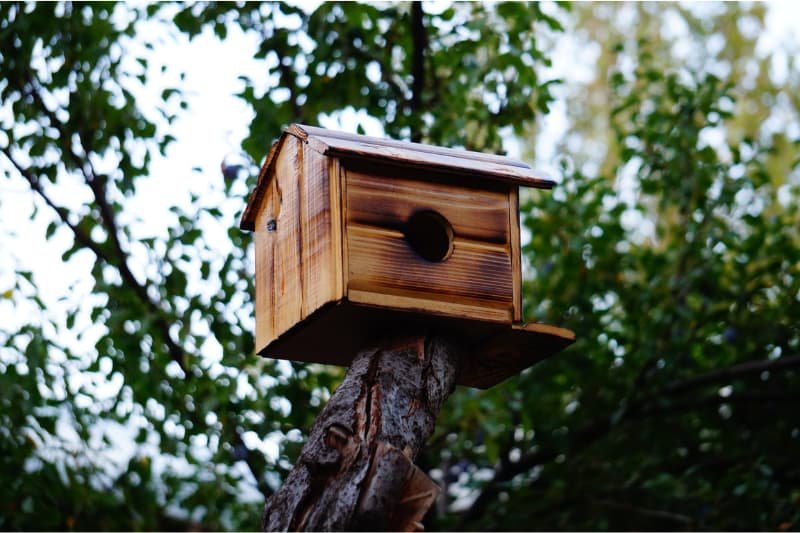
To attract a diverse range of bird species to your outdoor space, it is important to create a suitable shelter.
Birds need shelter to rest, hide from predators, and nest.
Examples of shelters include landscaping, brush piles, and roost boxes.
Bird-friendly landscaping includes planting trees, shrubs, and grasses that provide cover and nesting sites.
It is important to choose native plants to the local climate and soil conditions.
Landscaping for birds should focus on their needs over aesthetics. Consider leaving dead trees or snags, which are valuable nesting sites for woodpeckers and other cavity-nesting birds.
Birdhouses and roost boxes are also important for attracting and providing shelter to birds.
Birdhouses are designed for nesting and should be placed in suitable locations for the species you want to attract.
Roost boxes are bigger and designed to provide shelter for many birds during cold weather.
They can be filled with sawdust or wood shavings to provide insulation.
Brush piles are another easy and inexpensive way to provide shelter for birds.
They can be made by stacking branches and twigs in a corner of your yard.
These brush piles provide cover for ground-nesting birds and small mammals.
Additional Tips and Resources
Incorporating natural food sources like seed-bearing flowers and berry bushes can also attract a variety of bird species.
The addition of these types of plants can provide a steady supply of food for birds throughout the year.
Seed-bearing flowers like coneflowers, sunflowers, and zinnias can provide a source of natural seeds for birds.
Berry bushes like elderberry, blueberry, and raspberry can offer a tasty treat for birds during the summer and fall months.
It is important to research the types of plants that are native to your area and are suitable for the birds in your region.
DIY bird feeders can also be a fun and creative way to attract birds to your backyard. There are a variety of bird feeder designs that can be made using materials like wood, plastic, and metal.
Suet feeders, tube feeders, platform feeders, and even homemade nectar feeders can be used to attract different bird species.
DIY bird feeders can also be a great activity for bird-watching events or as a family project.
By providing a variety of food sources and DIY bird feeders, your backyard can become a hub for a diverse range of bird species.
FAQs:
How do I use social media to attract birds to my backyard?
To attract birds to your backyard using social media strategies, create content that promotes bird-friendly landscaping and offers tips on providing food, water, and shelter.
Use hashtags and engage with birding communities to increase visibility and engagement.
What are the best birdwatching binoculars to use in my backyard?
Binocular recommendations for backyard birding equipment include those with a magnification of 8-10x and an objective lens diameter of 32-42mm.
How can I train my pet cat to not chase birds in my backyard?
Cat behavior training may involve positive reinforcement techniques like treats, toys, and clicker training. Bird deterrents, such as bird netting, spikes, and decoys, may also be used to prevent cat-bird interactions.
What are the legal regulations for feeding wild birds in my area?
Ironically, feeding birds can have legal regulations to protect bird conservation. It is important to research feeding regulations in your area to avoid harming birds and their habitats. Consult local wildlife agencies for guidance.
How do I safely remove a bird’s nest from my property?
Safe disposal of bird nests involves waiting until nesting season ends and then removing the nest carefully to prevent damaging property or harming birds.

